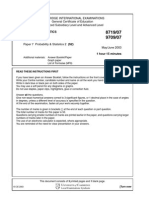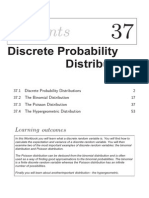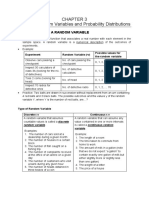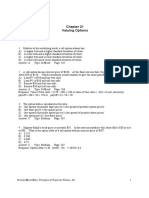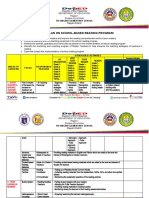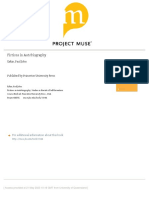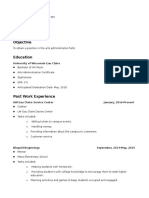0% found this document useful (0 votes)
116 views11 pagesBotswana Accountancy College: CIS227 Quantitative Analysis For Business
This document is a handout for a quantitative analysis course at Botswana Accountancy College. It includes questions on topics like discrete and continuous probability distributions, the student-t distribution, permutations, combinations, hypothesis testing, and the binomial distribution. The handout provides examples and formulas to demonstrate concepts and solutions for the questions. Students are asked to show work in Excel where applicable and provide screen dumps as part of their answers. References for further reading are also included at the end.
Uploaded by
Mmoloki KaisaraCopyright
© Attribution Non-Commercial (BY-NC)
We take content rights seriously. If you suspect this is your content, claim it here.
Available Formats
Download as DOCX, PDF, TXT or read online on Scribd
0% found this document useful (0 votes)
116 views11 pagesBotswana Accountancy College: CIS227 Quantitative Analysis For Business
This document is a handout for a quantitative analysis course at Botswana Accountancy College. It includes questions on topics like discrete and continuous probability distributions, the student-t distribution, permutations, combinations, hypothesis testing, and the binomial distribution. The handout provides examples and formulas to demonstrate concepts and solutions for the questions. Students are asked to show work in Excel where applicable and provide screen dumps as part of their answers. References for further reading are also included at the end.
Uploaded by
Mmoloki KaisaraCopyright
© Attribution Non-Commercial (BY-NC)
We take content rights seriously. If you suspect this is your content, claim it here.
Available Formats
Download as DOCX, PDF, TXT or read online on Scribd
/ 11







